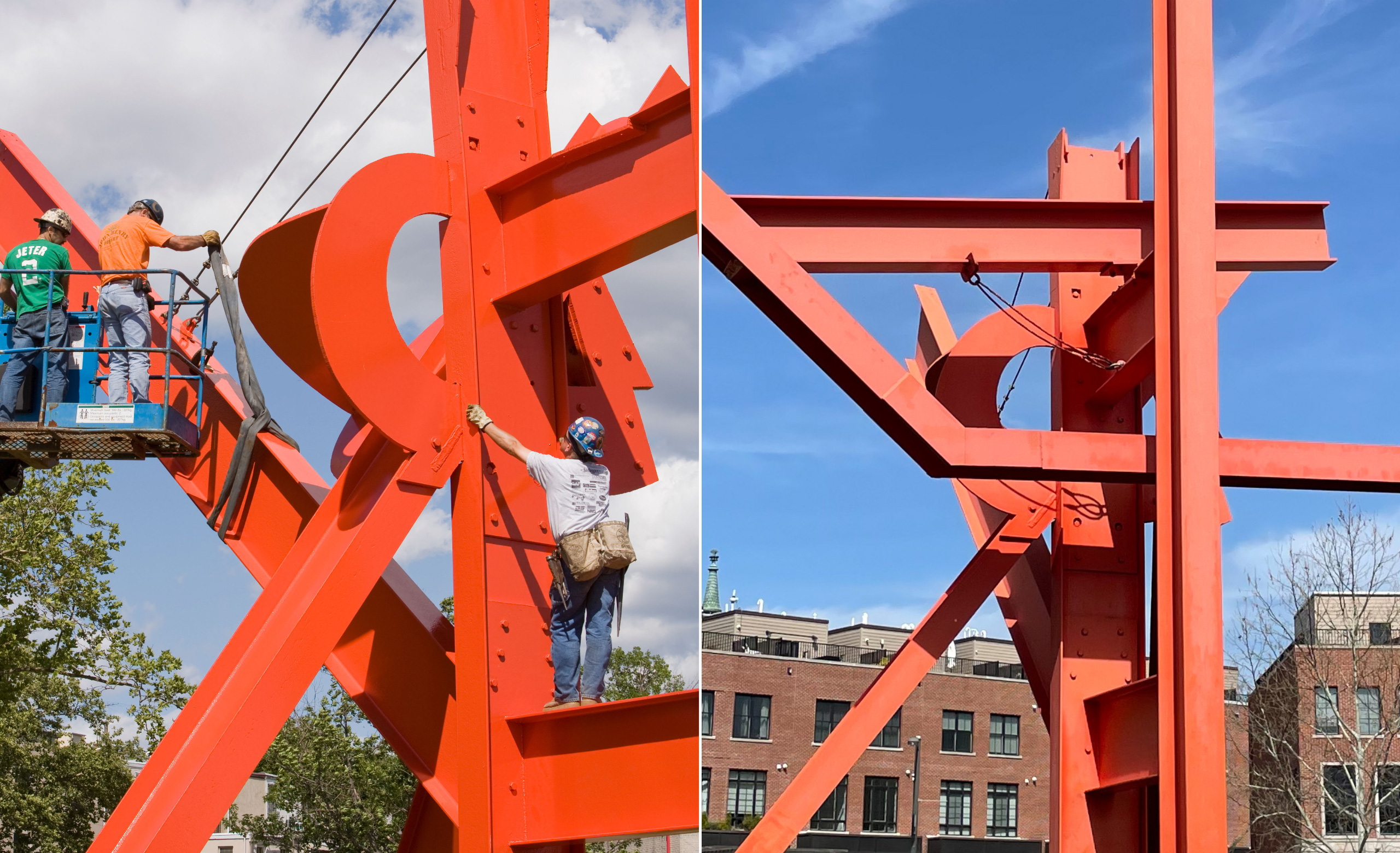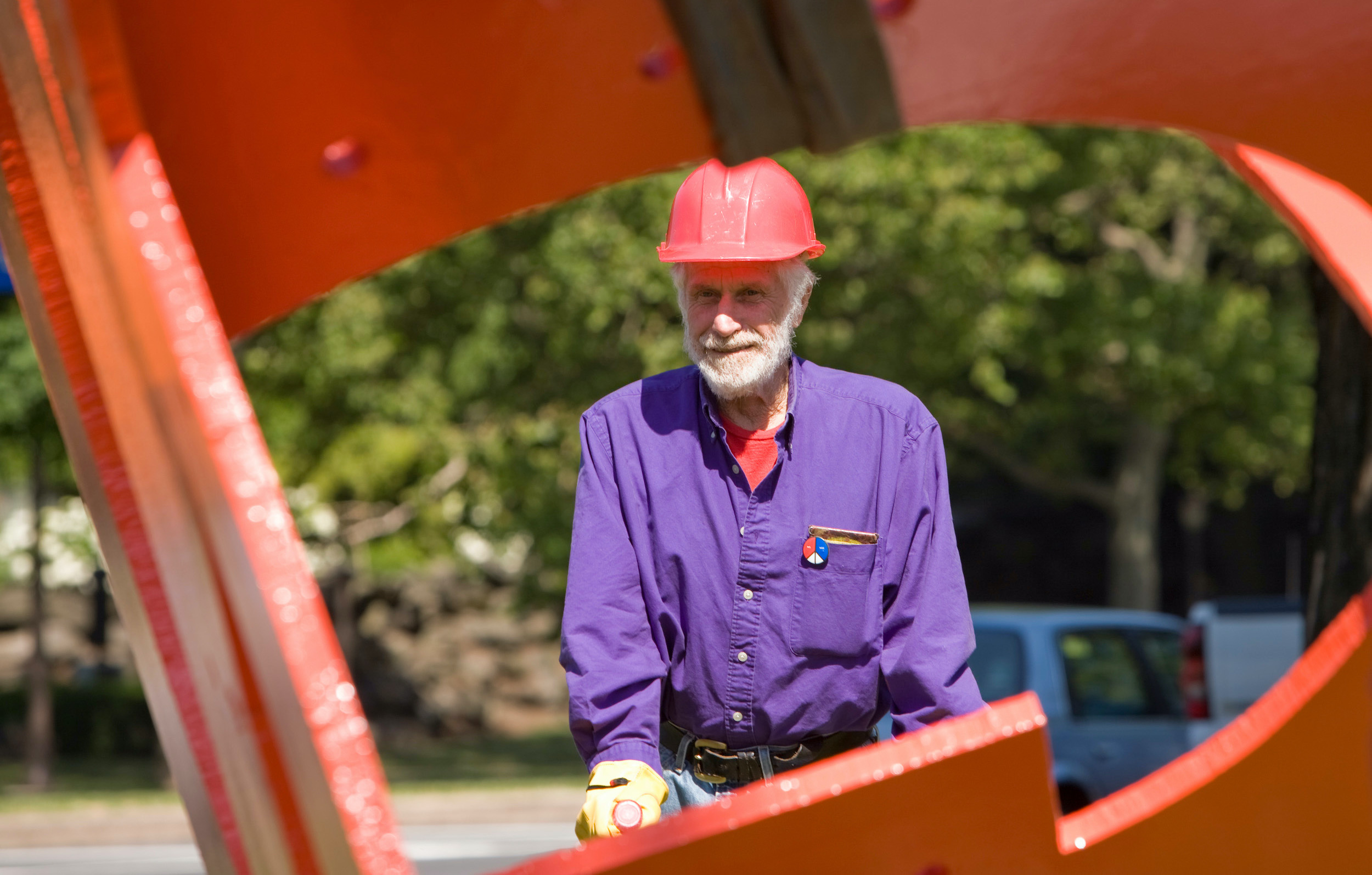Update: Timelapse video from the deinstallation below! Visit our 2022 conservation recap page for more information about this project.
Disassembling Iroquois will take a full day of work from a team of professionals, including conservators, welders, and riggers.
An iconic red-orange sculpture in Philadelphia is leaving the city this season for some much-needed care. In May 2022, the Association for Public Art (aPA) is temporarily removing Mark di Suvero’s massive Iroquois from its home on the Benjamin Franklin Parkway for conservation restoration. To get the job done, the forty-foot tall, 35,000-pound steel sculpture will be carefully disassembled, stripped, cleaned, and repainted. Iroquois will be reinstalled on the Parkway in September 2022 as part of the 150th anniversary celebration of the aPA, the oldest public art organization in the United States.

Iroquois arrived in Philadelphia in 2007, when the Association for Public Art was able to acquire and install the artwork thanks to the generous support of the late David Pincus. In the 15 years since it was originally installed, the bright red-orange paint has faded and chipped, resulting in the exposure of the steel I-beams to acid rain and other environmental hazards.
Philadelphia Inquirer: “Iconic Ben Franklin Parkway sculpture is getting a face-lift” ››
Disassembling Iroquois will take a full day of work from a team of professionals, including conservators, welders, and riggers. With the help of two cranes and a forklift with an extension arm, the crew will carefully remove all the bolts joining the sculpture’s seven I-beams and central, circular knot. The disassembled pieces will be transported on a flatbed truck to an industrial paint facility in Delaware, where they will receive conservation treatment – including the renewal of its signature red-orange paint.

The project is being undertaken and managed by Materials Conservation, assisted by Mammoet riggers, Color Works industrial paint contractors, Atlantic Coating Consultants (Independent Representatives of Tnemec Paint), as well as the artist’s studio, Spacetime CC. Funding has been provided in part by the generous support of the Pincus Family Foundation.
By the fall, Iroquois will look as fresh as its neighboring sculptures, the gilded Joan of Arc by Emmanuel Frémiet and stainless steel Symbiosis by Roxy Paine – also installed by aPA in 1890 and 2014, respectively.
About the Association for Public Art: The Association for Public Art (aPA, formerly Fairmount Park Art Association) commissions, preserves, interprets, and promotes public art in Philadelphia. The aPA is the nation’s first private nonprofit organization dedicated to creating a “Museum Without Walls” that informs, engages, and inspires diverse audiences. Established in 1872, aPA integrates public art and urban design through exemplary programs and advocacy efforts that connect people with public art. The aPA is a private nonprofit membership-based organization that works closely with the City of Philadelphia, including Parks & Recreation and the Office of Arts, Culture and the Creative Economy.
Top photo: The 2007 installation of “Iroquois” in Philadelphia. Photo © Gregory Benson for the Association for Public Art.